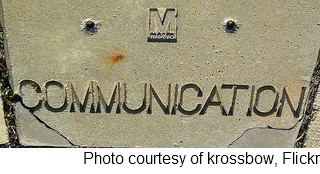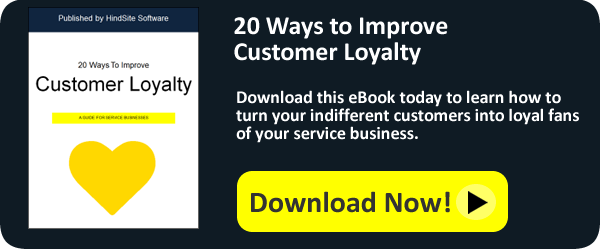By David Crary
It's that time of year again when green industry businesses analyze the results of their previous year and start budgeting for the next. For many businesses, it's also the time to start thinking about whether or not they are going to raise their contract prices.  We can have a long discussion about whether it's better to raise prices or reduce costs to attain better profit margins, but for this blog post, let's assume we've decided a price increase is in order. Now it's time to communicate that price increase to our customers. It's not a fun conversation to have, so what's the best way to handle price increase communications? Here are five tips:
We can have a long discussion about whether it's better to raise prices or reduce costs to attain better profit margins, but for this blog post, let's assume we've decided a price increase is in order. Now it's time to communicate that price increase to our customers. It's not a fun conversation to have, so what's the best way to handle price increase communications? Here are five tips:
-
Be open and honest. In 2011, video service provider Netflix decided to split its streaming and mail order video service into two separate services. This split caused some customers to bear a 60% price increase to keep the service they were previously buying. Uproar ensued, dropping Netflix's stock price and eventually causing CEO Reed Hastings to apologize for his “arrogance” and for failing to adequately explain the price hike.
So the first thing you need to do is be open and honest with your customers about your price increase. Don't just say “We're raising our prices.” Tell them why you're raising your prices. Fuel price increases, insurance costs, labor costs, etc. all contribute to shrinking margins. If you don't tell them why, they may assume you're raising your prices for no other reason than greed. -
Show what you're doing to deliver more value. The last thing you want is your customers thinking that what you do is a commodity. You don't want them going to your cheapest competitor. So make sure they understand the value you bring to the table.
One way to do that is to highlight new processes or services you've developed. For instance, HindSite recently released HindSite Connect, a great new service business marketing solution that allows our customers to email appointment confirmations, reminders and completion emails so customers always know when and what their service provider is doing on their property. A HindSite customer could highlight that new process in their renewal letter to differentiate themselves from the competition. Whatever you can do to show that going to cheapest service provider is going to lead to a degraded experience will help minimize the impact of the price increase. -
Be careful when communicating the price increase. We've all seen those ads with Sally Struthers where she talks about feeding the starving children in Africa. Notice that she doesn't express the cost in terms of the total annual cost or even the monthly cost of your sponsorship. Instead, she expresses the cost in its lowest form: a daily value. It's less than a cup of coffee per day!
Research has shown that certain words like “new” or “inexpensive” in front of a product can have a profound impact on our perceptions of a product. Likewise for the words you use to describe your price increase. Don't refer to it as a 10% increase if it really works out to $5 a month or $2 a visit. Use the lowest number possible to properly frame the price increase. -
If possible, communicate the price increase by phone. I'm a firm believer in building personal relationships with customers. At HindSite, that's become harder and harder as our work order software business has grown and our customer count goes through the roof. But the more you connect with a customer, the more likely you are to retain their business in the future.
So my advice when raising prices is to do it by phone, if at all possible. If you've got 4000 customers, obviously that's not going to be easy. In which case, I'd prioritize based on the value of your customers. I'd start by taking a look at the customers that bring in the most revenue, and give them a call. But revenue isn't the important consideration. Think about which customers speak glowingly of your business and contribute the most referrals. Give them a call, too.
And be sure to at least script the core message you're going to deliver. The tips above can help you pinpoint precisely what you want to say. -
Give them an option for a longer contract at a reduced rate. CenturyLink delivers phone and Internet service in my neighborhood. One of the things they've started to do recently is give people discounts for longer-term contracts. Just yesterday I received an promotional mailing from them that offered me phone, Internet and Dish Network service for $99/mo for three years if I signed a three-year contract.
Consider doing that for your customers if you think many of them could potentially walk if you increase prices. You're guaranteed revenue for a longer period of time, and they're able to lock-in at a potentially reduced rate for a period of time, insulating them from future price increases. This approach isn't for every business – a sudden increase in fuel prices, for instance, could damage your margins – but if you get a small percentage of your key customers on longer-term contracts, it could reduce your churn rate.
Raising prices is always a difficult thing to communicate. But if handled well, you can actually help reinforce the value you bring to a customer relationship instead of seeing customers bolt for your cheapest competitor.
Want other tips on how to increase the loyalty of your cusotmers? Download our free eBook, 20 Ways to Improve Customer Loyalty, today!








